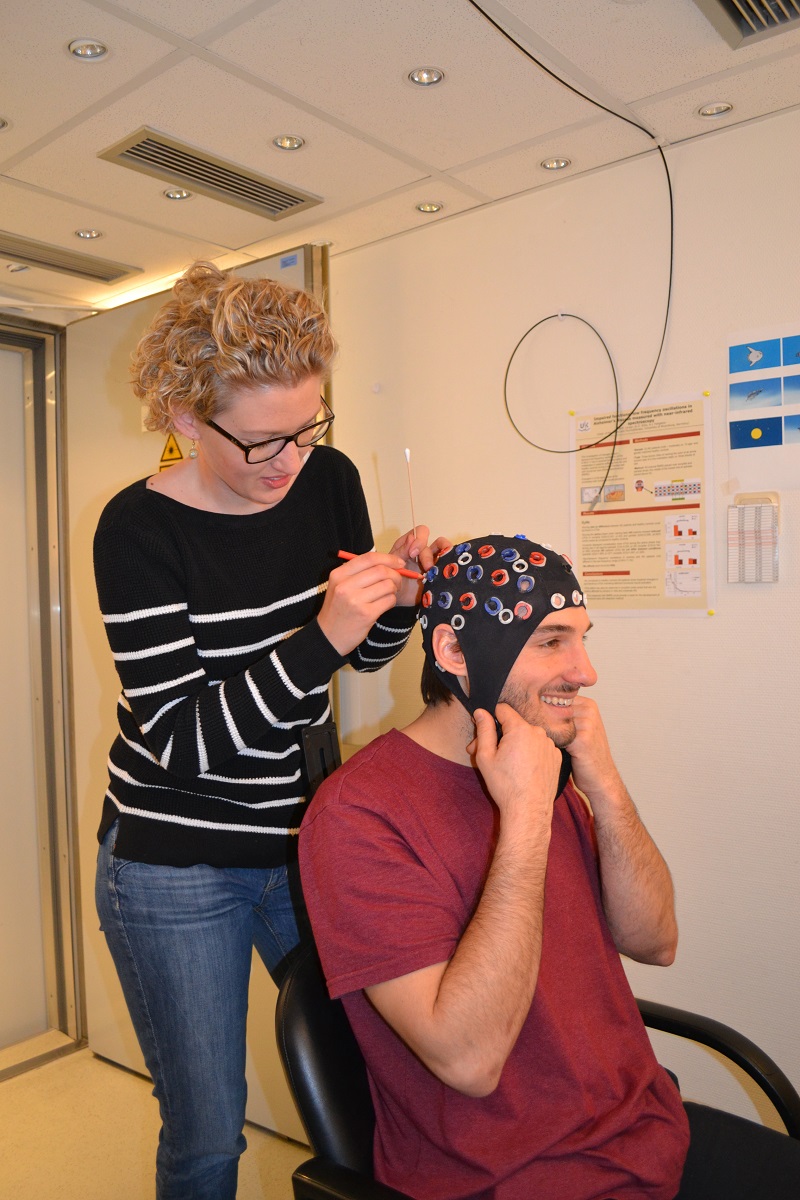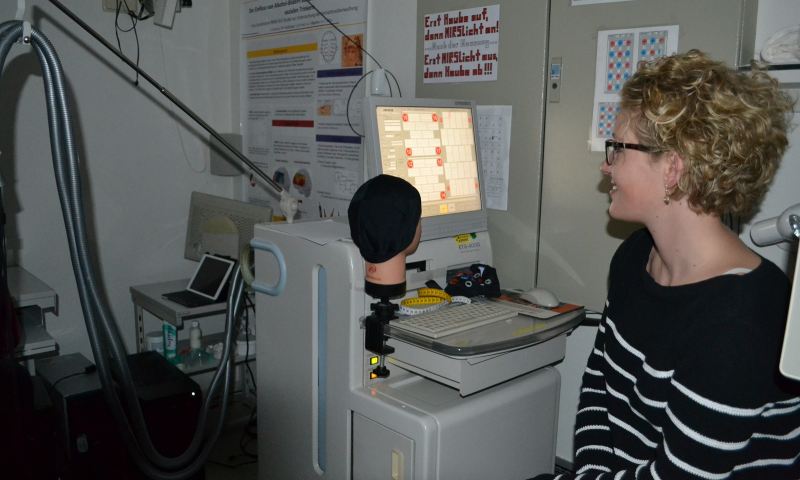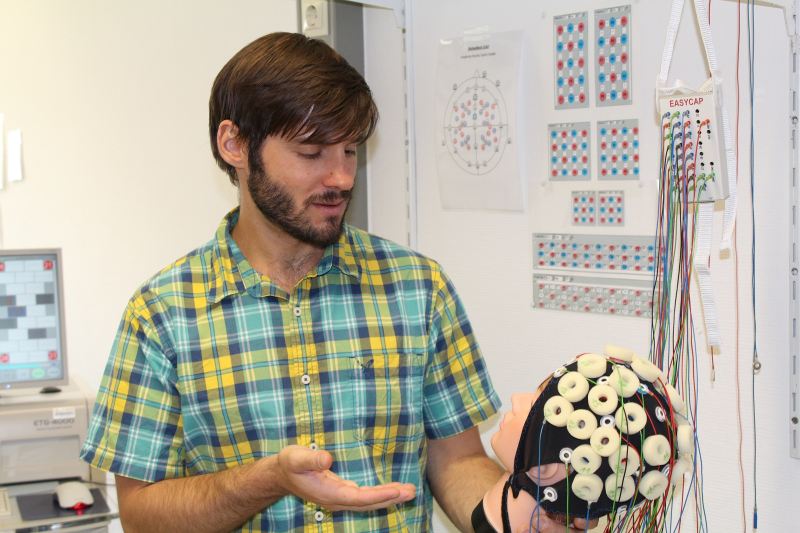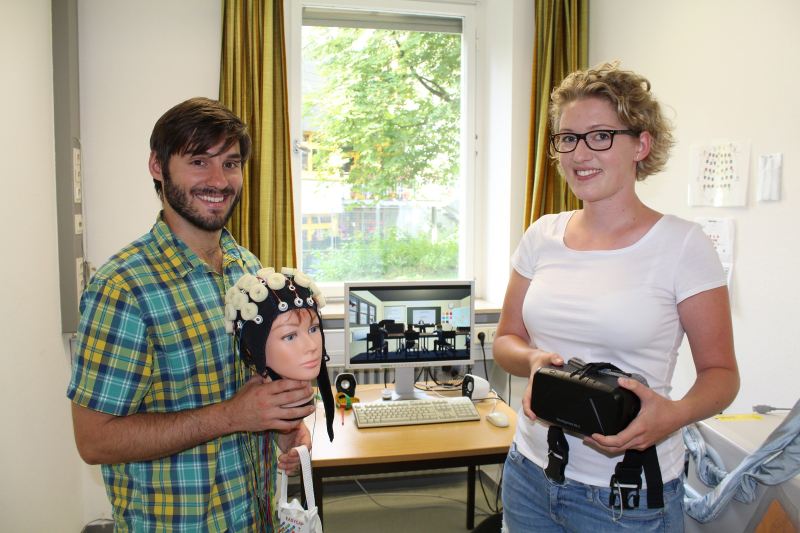

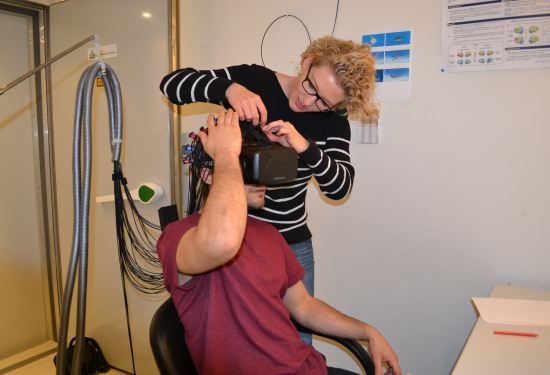
Friederike Blume & Justin Hudak, PhD Students
Hometowns: Oppenweiler, Germany (Friederike) & Baltimore, Maryland, USA (Justin)
Affiliations: Both are members of the LEAD Graduate School and Network at the University of Tübingen. Friederike is also affiliated with the School Psychology Group, and Justin is with the Psychophysiology and Optical Imaging Group at the University Hospital Tuebingen (UKT).
What are you working on?
Friederike: We work on an intervention program for children with attention-deficit/hyperactivity disorder (ADHD). Children with ADHD cannot concentrate well at school, often act before they think and are very active in moving arms, legs or the whole body. Our training program teaches them to better control themselves, i.e. their thoughts, focus of attention, their actions, and their movements. The training is called a bio- or neurofeedback training and takes place in a virtual reality classroom environment.
Justin: While such trainings are not new in the field of ADHD research, we are working towards optimization of the method. We use functional near-infrared spectroscopy (fNIRS) which measures the blood-oxygenation level dependant response. Basically, as an area of the brain becomes more activated, it requires more oxygen for fuel and maintenance. This increase or decrease in oxygen can be measures due to the special optical properties of oxygen-rich haemoglobin in the blood. We try to train the prefrontal brain area of ADHD children by rewarding task-specific increases in oxygenated blood.
Why is it interesting?
Friederike: ADHD is the most prevalent mental disorder in children. Unfortunately, there is not much you can do to permanently reduce the symptoms. However, the training we offer might be an approach to do so. In addition, we think that our training might help in improving the childrens school performance, which is often poor in children with ADHD.
Justin: Exactly as Friederike stated, ADHD is prevalent and difficult to treat. While the most common method for treating it is using stimulant medication, this method has drawbacks, and doesn't address a holistic route to symptom improvement. Bio- and neurofeedback places the onus of recovery on the children themselves, and evidence suggests that the effects can last for years after the therapy stops, meaning it has the potential to be a more sustainable part of the treatment plan.
What do you like most about being a researcher?
Friederike: That I am allowed to discover things that might have an impact on future research, on the future of bio- and neurofeedback trainings and on the future of children with ADHD. I think this is a great chance and a lot of responsibility we bear at the same time.
Justin: I like that there is a new challenge every day, or at least every week, that is quite different from the ones that came before. No two of these challenges are ever the same! I also really like working with the kids, especially those who are motivated and invested in their own therapy; it's not really the science aspect, but my background comes from more of a therapeutic vein.
Your favourite thing outside of science?
Friederike: Rowing up and down the Neckar in Lustnau.
Justin: Essentially any adventure that I can convince my girlfriend or friends to partake in. Currently rock climbing and cycle touring are my favorites.
